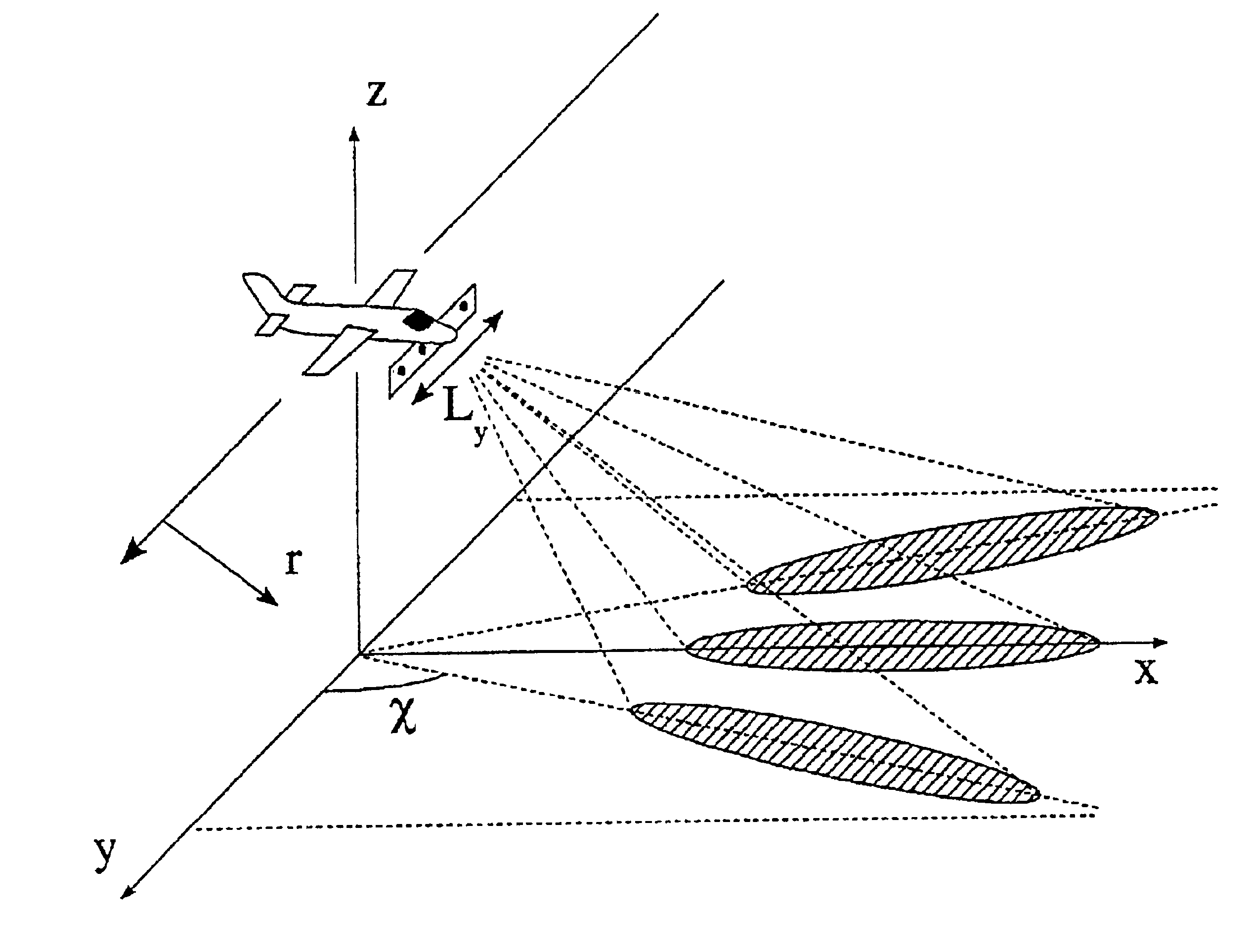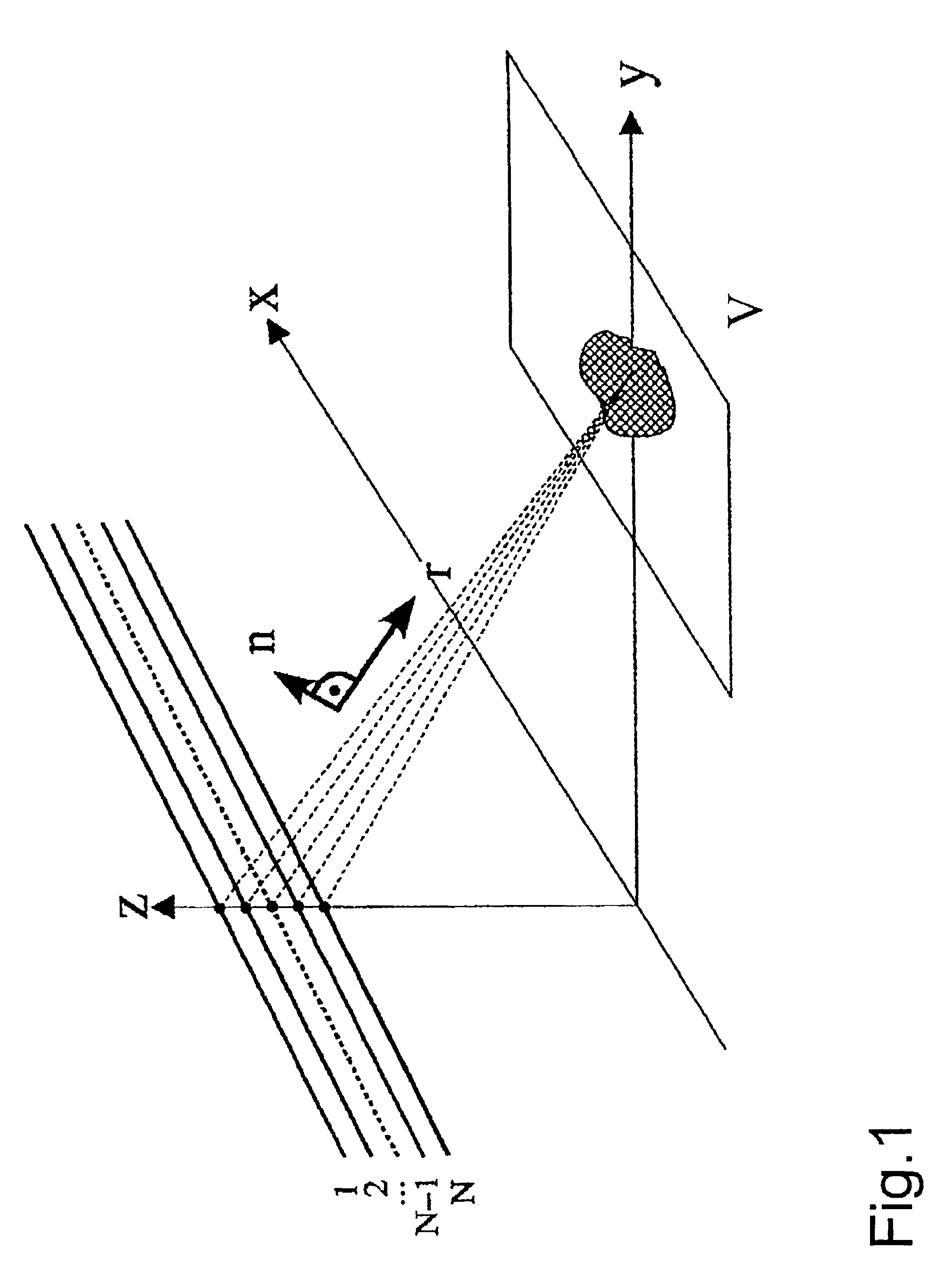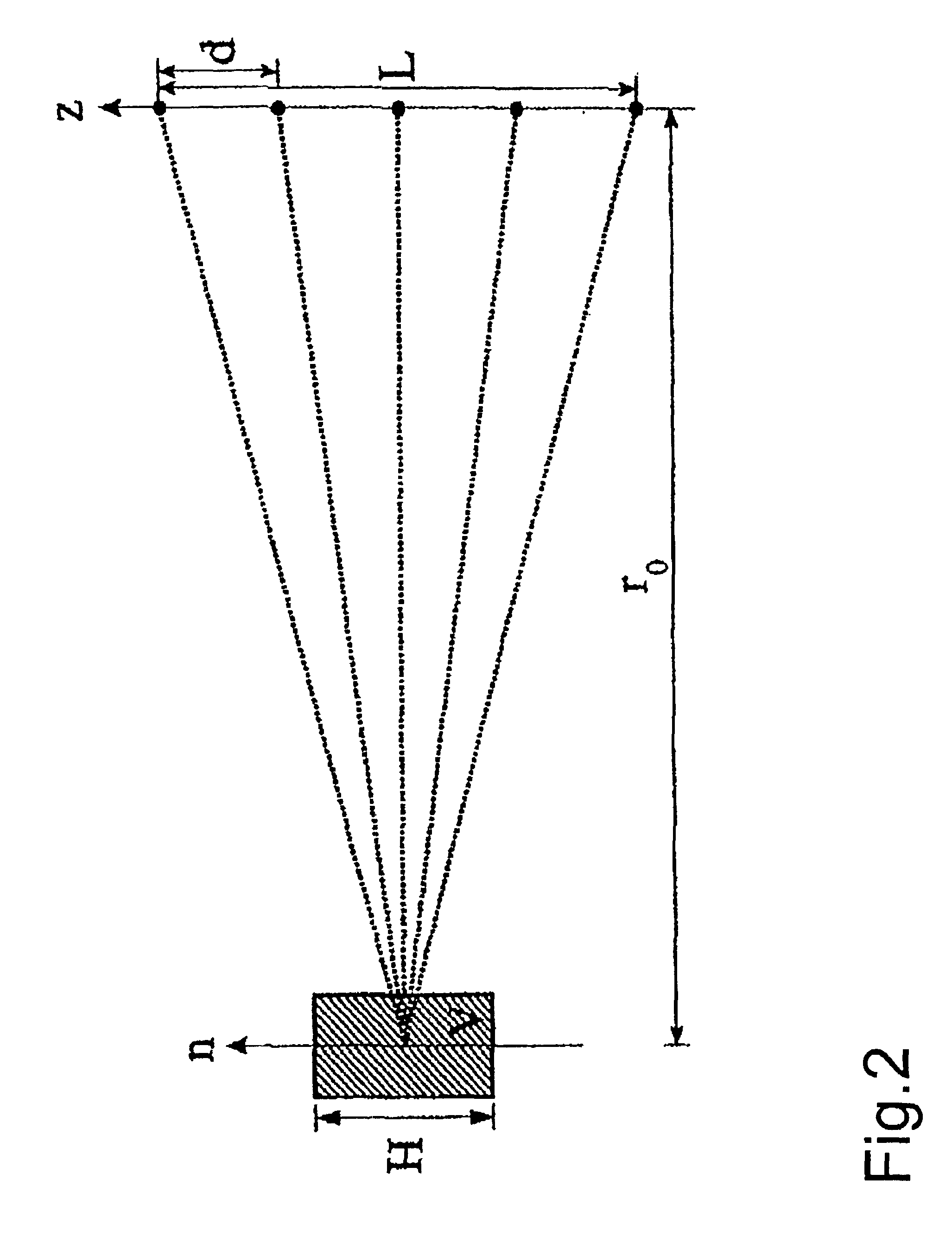Airborne or spaceborne tomographic synthetic aperture radar (SAR) method
a technology of synthetic aperture radar and airborne space, applied in the field of tomographic synthetic aperture radar (sar) method operating, can solve the problems of inability to achieve true three-dimensional imaging, inability to resolve the elevation angle or topographical elevation of backscatter, and multiple backscatter contributions delayed
- Summary
- Abstract
- Description
- Claims
- Application Information
AI Technical Summary
Benefits of technology
Problems solved by technology
Method used
Image
Examples
Embodiment Construction
[0036]Referring now to FIG. 1 there is illustrated in a Cartesian x-y-z-system of coordinates the basic geometry of a radar sensor in a side view for three-dimensional object imaging. The movement of the sensors is to be imagined parallel along the x axis. The various independent antenna elements of an antenna array are arranged so that each thereof (paths 1,2 . . . N-1, N of the antenna elements) views the scene and thus the volume targets V at a different angle.
[0037]Referring now to FIG. 2 there is illustrated a simplified geometry in which an array of antenna elements has the aperture length L and the center-spacing of the antenna elements is d and the mean angle of incidence is 0°, i.e. the n axis as shown in FIG. 1 is parallel to the z direction. In this geometry the spacing between a scatter at the elevation n0 and the antenna element at the position z is r (z,n0)=2r02+(z-n0)2≈2r0+(z-n0)2r0(1)
[0038]The signal sr(z, n0) received by this antenna element can thus be modeled ...
PUM
 Login to View More
Login to View More Abstract
Description
Claims
Application Information
 Login to View More
Login to View More - R&D
- Intellectual Property
- Life Sciences
- Materials
- Tech Scout
- Unparalleled Data Quality
- Higher Quality Content
- 60% Fewer Hallucinations
Browse by: Latest US Patents, China's latest patents, Technical Efficacy Thesaurus, Application Domain, Technology Topic, Popular Technical Reports.
© 2025 PatSnap. All rights reserved.Legal|Privacy policy|Modern Slavery Act Transparency Statement|Sitemap|About US| Contact US: help@patsnap.com



